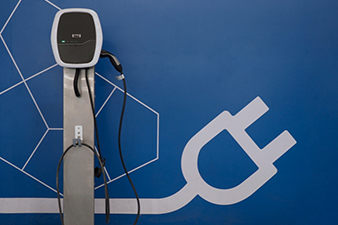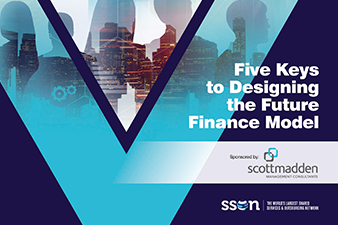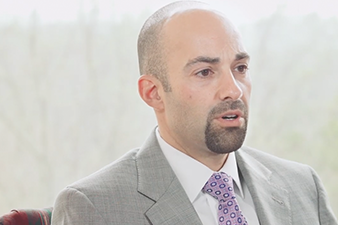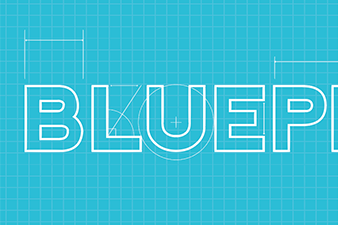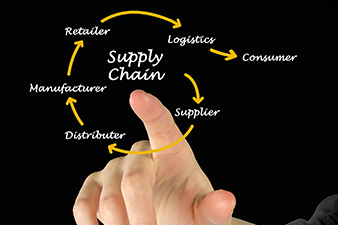
Beginning in the mid- to late-2000s, many procurement organizations evolved from a largely decentralized model to one that is more centralized and focused on strategic procurement activities. As a result, organizations today are looking for improvements through new areas of focus like automation, strategic sourcing, and category management. However, challenges including unclear roles, ineffective uses of technology, and poor customer service continue to plague procurement and the procure-to-pay (P2P) process in many organizations.
In October 2021, APQC hosted Trey Robinson and John Francis (partners and supply chain co-leads) from ScottMadden for a webinar to discuss leading practices in procurement transformation. Robinson and Francis provided insights and guidance related to:
- evolving governance and centralization in procurement,
- identifying and addressing challenges in procure-to-pay, and
- designing and implementing new service delivery models for procurement.
The following provides an overview of the webinar and includes links to articles that explore Francis’ and Robinson’s guidance in more detail.
Access the complete article series here.
Evolution of Procurement Transformation
Since the mid- to late-2000s, the emphasis on procurement has shifted in many organizations, from administrative and transactional activities to strategic activities. This shift has led to the development of new procurement service delivery models that “align the organization to the work being performed in a way that efficiently delivers service while also reaping the rewards of strategic buying, category management, and improved productivity, efficiency, and technology enablement,” according to Francis. As part of this shift, procurement groups have started to understand their impacts on accounts payable (AP) in a deeper way, which has led both procurement and AP to move toward an end-to-end P2P process.
| Learn more about centralization and governance for P2P: |
To coordinate process improvement activities like standardization and gain visibility over the entire value chain, leading organizations centralize governance of end-to-end processes by identifying a single process owner for each end-to-end process. As Francis explained, centralized governance “drives a stronger mandate toward standardization of policies and processes while still retaining a separate organization to execute the day-to-day operations.”
One important benefit of centralized governance is that it enables organizations to strike a better balance between important operational and strategic areas of procurement. Francis said that leading organizations seek a balanced approach to developing and maintaining three key procurement capabilities:
- Responsive customer service is important for processing purchase orders in a timely way, responding to operational inquiries, and ensuring that administrative requirements are met.
- Procurement teams that provide impactful sourcing strategies to the business drive greater buy-in and support for procurement goals.
- End-to-end ownership of spend categories drives more effective category management that drives better value over the duration of a contract.
Centralization through a single process owner is the best governance structure for breaking down silos throughout the P2P process and achieving a healthy balance of focus among these three areas.
Identifying and Addressing Challenges in P2P
Procure-to-pay is a value chain that comprises multiple procurement and finance processes—which means that there are plenty of opportunities for things to go wrong along the way. Francis described three broader symptoms that signal a P2P process is in need of improvement or redesign:
- Unclear roles: Transactional roles are being asked to execute strategic work and/or strategic roles are completing transactional tasks, leaving them feeling overwhelmed amidst competing priorities.
- Activity without achievement: Business unit partners and vendors see procurement as requiring steps that take time, get in the way of what they need to accomplish, and are not rooted in an understanding of the business.
- Uncertain service access: Procurement has centralized activities and staff, leading to business unit partners feeling abandoned and uncertain about how to access procurement. In some cases, the business unit attempts to do the work locally rather than turn to the centralized procurement team.
| Learn more about how to identify and address problems in P2P:
» How to Diagnose and Fix Problems with Your Procure-to-Pay Model |
All of these issues have a root cause that generally stems from the design of the end-to-end process model or the structures that support the process. For example, when roles are unclear, strategic procurement employees will likely find themselves spending a lot of their time carrying out transactional tasks rather than providing value-added services or analysis.
Francis presented a tiered service delivery model developed by ScottMadden that addresses these and other common P2P challenges (Figure 1). Roles are clear in this model because procurement activities are defined, measured, and deliberately placed into specific tiers. The tiers are direct access, customer service, special services, and strategic support. Service management technologies like vendor and customer portals, case management tools, knowledge bases, and intelligent workflow tools enable the model and help route work according to clear rules embedded directly into processes.
ScottMadden Tiered Service Delivery Model for Procurement
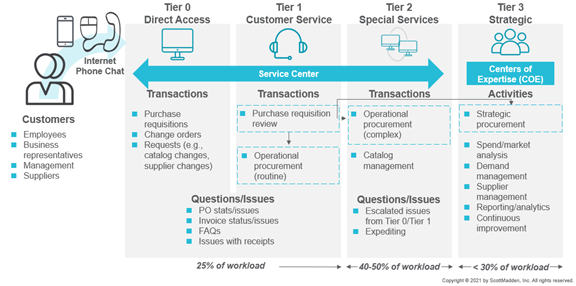
How to Transition to a New Model for Procurement
Implementing a tiered service delivery model for procurement is no small feat. Among other things, this type of procurement transformation requires detailed design to fit your business, sophisticated Project Management, substantive changes to policies and processes, new designs for organizational structure, robust change management, and more. Coordinating all of these activities can easily feel daunting if the transformation is not carefully planned and orchestrated.
Organizations should begin their journey with a comprehensive and thorough assessment of the current state of procurement and move to designing a service model that is customized to your business. Robinson described five inputs that organizations should include in this assessment:
- site visits and interviews to build a deeper understanding of procurement processes;
- a work activity assessment to map where work is performed, how much, and by whom;
- a performance metric assessment to gather and analyze key procurement benchmarks;
- a customer satisfaction survey to gauge how satisfied internal customers are with the current level of service and provide a baseline for improvement; and
- leading practices adoption analysis to probe the depth and breadth of leading procurement practices across the enterprise.
An assessment that includes these inputs helps inform design activities like activity and service placement and policy, process, and procedure alignment in a new model.
Implementation Workstreams
| Learn more about implementing a new service delivery model in procurement: |
After designing a new model for procurement, it’s best to organize implementation into a series of distinct but interconnected workstreams. Robinson reviewed six typical workstreams for a service delivery model implementation:
- A planning and project management workstream to orchestrate and facilitate the transformation.
- A workstream for policies, processes, and procedures, which includes documenting current state processes, defining requirements for future state processes, and redesigning policies or processes.
- Organization and staffing, which includes the creation of job descriptions, planning selection methods, evaluating candidates, and managing transitions.
- Communication, change management, and training is a workstream that focuses on assessing the impact of change on stakeholders, building awareness of change through a communication plan, assessing training and education needs, and conducting training and education.
- A technologies workstream to evaluate current-state technologies in procurement, define requirements for the future state, and implement new technologies. Included in this workstream are functional procurement technologies, service management technologies, and automation technologies.
- A facilities workstream if the organization plans to co-locate procurement employees in a new facility. This workstream helps to organize the work of determining requirements for the service center, construction or renovation, ordering and installing equipment, and other facilities needs.
Robinson also described several leading practices and hallmarks of success for an effective service model implementation. For example, defining procurement responsibilities by group helps ensure that procurement tasks can be slotted into their appropriate tier or area as part of a procurement transformation. Organizations should also leverage benchmarks and KPIs before, during, and after the transition to benchmark and track performance throughout the implementation and afterward.
Conclusion
Procurement organizations often see challenges in the P2P process that stem from unclear roles, an overly complex process, or uncertain service channels. The good news is that the steps, strategies, and tools outlined by ScottMadden come directly from successful procurement transformations across a wide range of organizations and industries. Following these approaches enables a smoother and more seamless procurement transformation that delivers higher customer satisfaction and drives more value for the business.





















